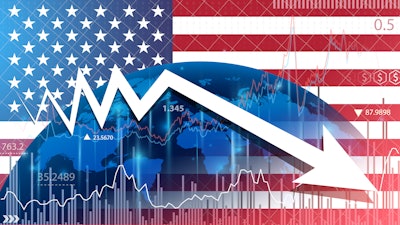
American consumers could lose between $46-78 billion in spending power each year if new tariffs on imports to the United States are implemented, according to a new study released by the National Retail Federation (NRF).
A universal 10-20% tariff on imports from all foreign countries and an additional 60-100% tariff on imports specifically from China would impact apparel, toys, furniture, household appliances, footwear and travel goods.
“Retailers rely heavily on imported products and manufacturing components so that they can offer their customers a variety of products at affordable prices,” NRF VP of supply chain and customs policy Jonathan Gold says. “A tariff is a tax paid by the U.S. importer, not a foreign country or the exporter. This tax ultimately comes out of consumers’ pockets through higher prices.”
Key takeaways:
- While some U.S. manufacturers may benefit from the tariffs, the gains to U.S. producers and the Treasury from tariff revenue do not outweigh overall losses to consumers. For example, a $40 toaster oven would cost consumers $48-$52 after the tariffs. The price of a $50 pair of athletic shoes would jump to $59-$64 and a $2,000 mattress and box spring set would end up costing $2,128-$2,190. Within each category, higher prices and loss of spending power would hit low-income families especially hard.
- The proposed tariffs would have a significant and detrimental impact on the costs of a wide range of consumer products sold in the United States, particularly on products where China is the major supplier.
- The increased costs would be too large for U.S. retailers to absorb and would result in prices higher than many consumers would be willing or able to pay.
- Consumers would pay $13.9-$24 billion more for apparel; $8.8-14.2 billion more for toys; $8.5-13.1 billion more for furniture; $6.4-10.9 billion more for household appliances; $6.4-10.7 billion more for footwear, and $2.2-3.9 billion more for travel goods.
- Based on current trade, average tariff rates for all categories examined would exceed 50% in the extreme tariff scenario, up in most cases from single or low double digits.
















![Pros To Know 2026 [color]](https://img.sdcexec.com/mindful/acbm/workspaces/default/uploads/2025/08/prostoknow-2026-color.mduFvhpgMk.png?ar=16%3A9&auto=format%2Ccompress&bg=fff&fill-color=fff&fit=fill&h=135&q=70&w=240)